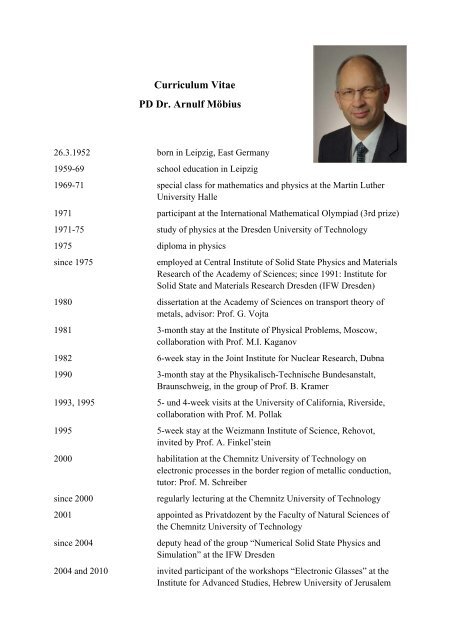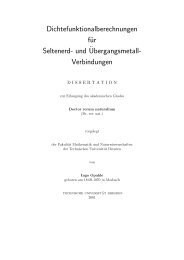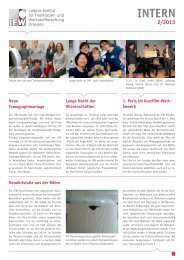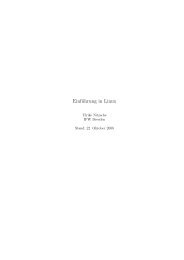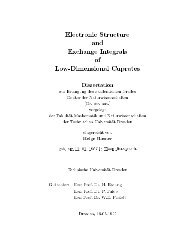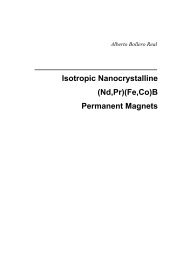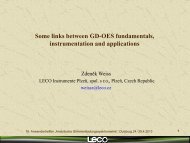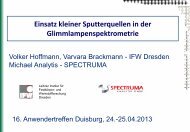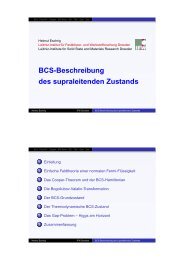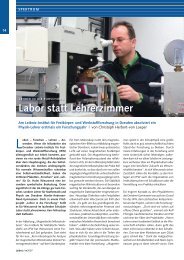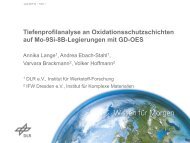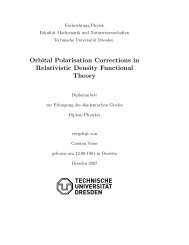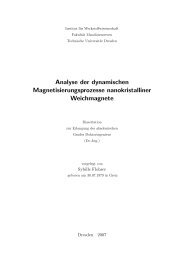Curriculum Vitae PD Dr. Arnulf Möbius - Leibniz Institute for Solid ...
Curriculum Vitae PD Dr. Arnulf Möbius - Leibniz Institute for Solid ...
Curriculum Vitae PD Dr. Arnulf Möbius - Leibniz Institute for Solid ...
You also want an ePaper? Increase the reach of your titles
YUMPU automatically turns print PDFs into web optimized ePapers that Google loves.
<strong>Curriculum</strong> <strong>Vitae</strong><br />
<strong>PD</strong> <strong>Dr</strong>. <strong>Arnulf</strong> <strong>Möbius</strong><br />
26.3.1952 born in Leipzig, East Germany<br />
1959-69 school education in Leipzig<br />
1969-71 special class <strong>for</strong> mathematics and physics at the Martin Luther<br />
University Halle<br />
1971 participant at the International Mathematical Olympiad (3rd prize)<br />
1971-75 study of physics at the <strong>Dr</strong>esden University of Technology<br />
1975 diploma in physics<br />
since 1975 employed at Central <strong>Institute</strong> of <strong>Solid</strong> State Physics and Materials<br />
Research of the Academy of Sciences; since 1991: <strong>Institute</strong> <strong>for</strong><br />
<strong>Solid</strong> State and Materials Research <strong>Dr</strong>esden (IFW <strong>Dr</strong>esden)<br />
1980 dissertation at the Academy of Sciences on transport theory of<br />
metals, advisor: Prof. G. Vojta<br />
1981 3-month stay at the <strong>Institute</strong> of Physical Problems, Moscow,<br />
collaboration with Prof. M.I. Kaganov<br />
1982 6-week stay in the Joint <strong>Institute</strong> <strong>for</strong> Nuclear Research, Dubna<br />
1990 3-month stay at the Physikalisch-Technische Bundesanstalt,<br />
Braunschweig, in the group of Prof. B. Kramer<br />
1993, 1995 5- und 4-week visits at the University of Cali<strong>for</strong>nia, Riverside,<br />
collaboration with Prof. M. Pollak<br />
1995 5-week stay at the Weizmann <strong>Institute</strong> of Science, Rehovot,<br />
invited by Prof. A. Finkel’stein<br />
2000 habilitation at the Chemnitz University of Technology on<br />
electronic processes in the border region of metallic conduction,<br />
tutor: Prof. M. Schreiber<br />
since 2000 regularly lecturing at the Chemnitz University of Technology<br />
2001 appointed as Privatdozent by the Faculty of Natural Sciences of<br />
the Chemnitz University of Technology<br />
since 2004 deputy head of the group “Numerical <strong>Solid</strong> State Physics and<br />
Simulation” at the IFW <strong>Dr</strong>esden<br />
2004 and 2010 invited participant of the workshops “Electronic Glasses” at the<br />
<strong>Institute</strong> <strong>for</strong> Advanced Studies, Hebrew University of Jerusalem
Although I am a pure theoretician with respect to education, my scientific interests range from<br />
detailed evaluation of experimental data via analytical theory and computer simulation up to<br />
numerical mathematics.<br />
For the last years, I have worked mainly on two fields: the numerical simulation of the<br />
Coulomb glass and experiments on the metal-insulator transition in amorphous semiconductor<br />
transition metal alloys. The <strong>for</strong>mer studies are devoted to the influence of many-particle<br />
effects on the specific heat and to the order-disorder transition in this model. For that, we have<br />
developed highly efficient algorithms <strong>for</strong> combinatorial optimization and <strong>for</strong> Monte Carlo<br />
simulations at low temperatures. The experiments on the metal-insulator transition are<br />
per<strong>for</strong>med in tight collaboration with colleagues at the IFW <strong>Dr</strong>esden and the<br />
Forschungszentrum <strong>Dr</strong>esden-Rossendorf. Their strategy is based on the phenomenological<br />
analysis of temperature derivatives of the conductivity. This yields qualitatively new insight,<br />
demands however a very high experimental precision. My previous research was dedicated to<br />
phase transitions of 2 1/2 order, transport theory of metals, simulation of the quench of<br />
superconducting magnet systems, and to numerical methods <strong>for</strong> solving stiff differential<br />
equations.<br />
Scientific exchange is very important to me. After the dissertation in the group of Prof. G.<br />
Vojta, the collaborations with Prof. M. I. Kaganov, Moskau, and Prof. M. Pollak, Riverside,<br />
were <strong>for</strong>mative regarding my scientific way, as well as the more than one decade of<br />
collaboration with Prof. M. Schreiber, Chemnitz, and his group. Simultaneously I owe<br />
numerous stimulations in particular to <strong>Dr</strong>. C. J. Adkins, Prof. B. Kramer, and Prof. P.<br />
Thomas.<br />
I ascribe high significance to the passing on of experience to students. There<strong>for</strong>e, additionally<br />
to my research at the IFW <strong>Dr</strong>esden, I regularly give lectures at the <strong>Institute</strong> of Physics of the<br />
Chemnitz University of Technology. According to my scientific experience, they are devoted<br />
to solid state theory and applied numerics.<br />
I am married, we have three children.<br />
<strong>Dr</strong>esden, 07/29/2010


